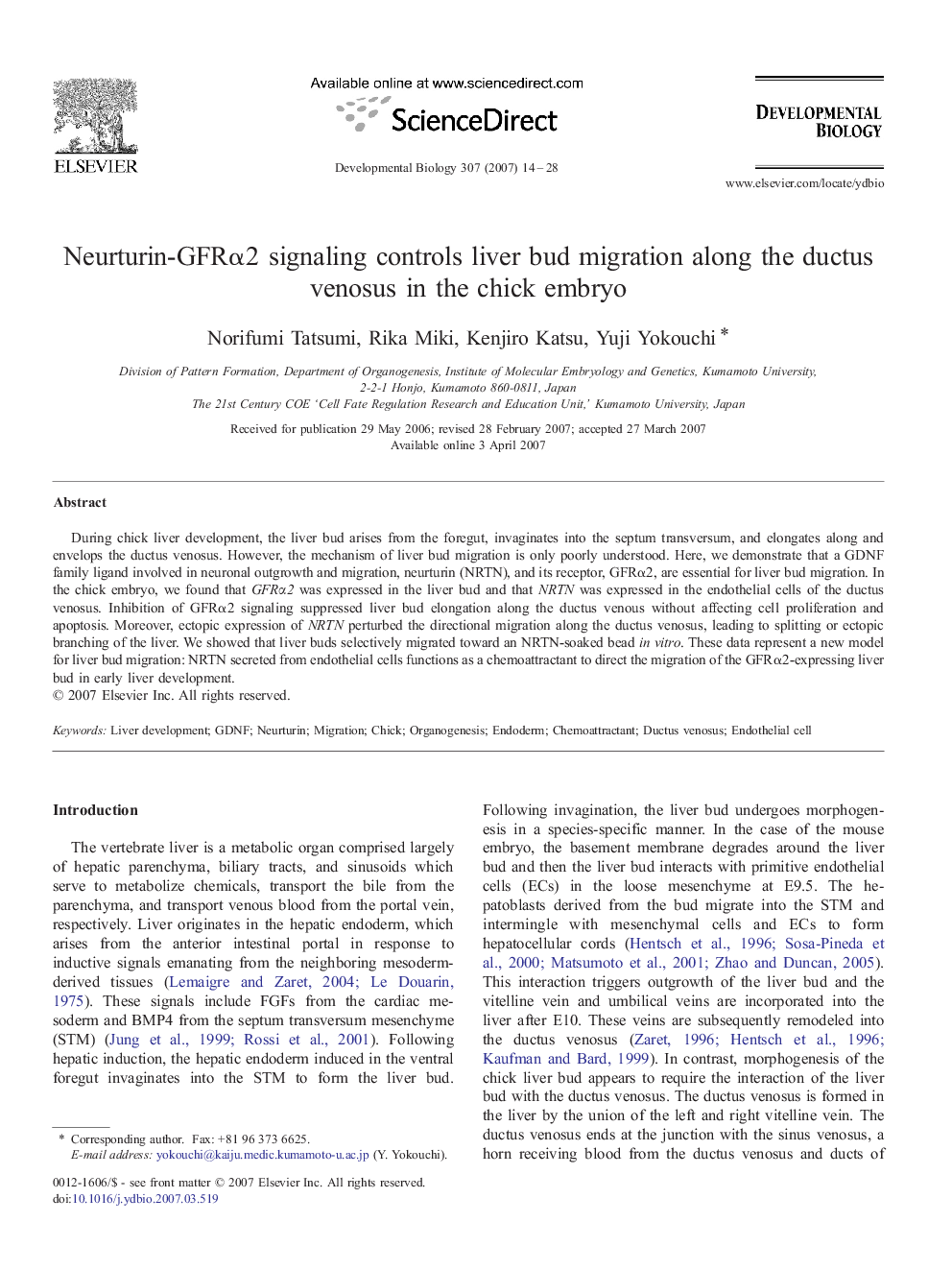| Article ID | Journal | Published Year | Pages | File Type |
|---|---|---|---|---|
| 2175202 | Developmental Biology | 2007 | 15 Pages |
During chick liver development, the liver bud arises from the foregut, invaginates into the septum transversum, and elongates along and envelops the ductus venosus. However, the mechanism of liver bud migration is only poorly understood. Here, we demonstrate that a GDNF family ligand involved in neuronal outgrowth and migration, neurturin (NRTN), and its receptor, GFRα2, are essential for liver bud migration. In the chick embryo, we found that GFRα2 was expressed in the liver bud and that NRTN was expressed in the endothelial cells of the ductus venosus. Inhibition of GFRα2 signaling suppressed liver bud elongation along the ductus venous without affecting cell proliferation and apoptosis. Moreover, ectopic expression of NRTN perturbed the directional migration along the ductus venosus, leading to splitting or ectopic branching of the liver. We showed that liver buds selectively migrated toward an NRTN-soaked bead in vitro. These data represent a new model for liver bud migration: NRTN secreted from endothelial cells functions as a chemoattractant to direct the migration of the GFRα2-expressing liver bud in early liver development.
